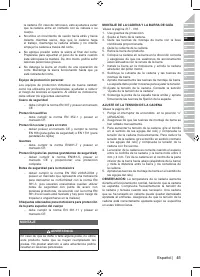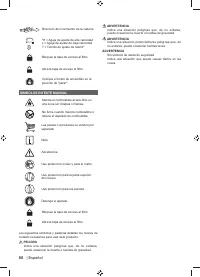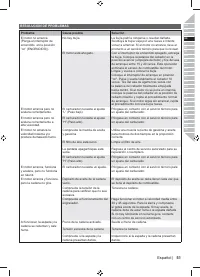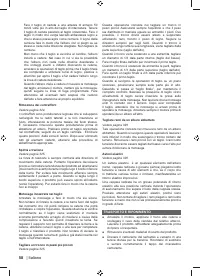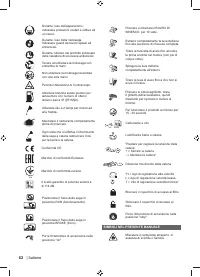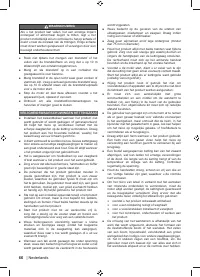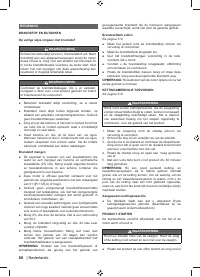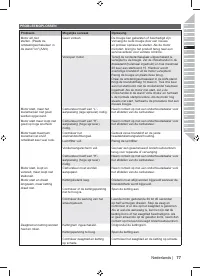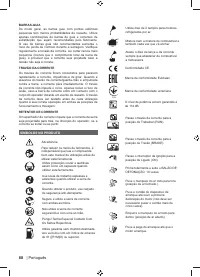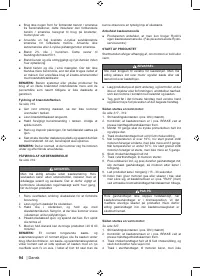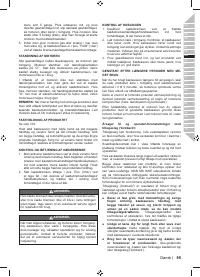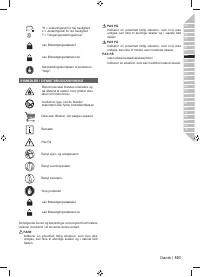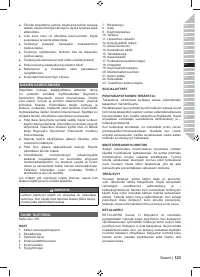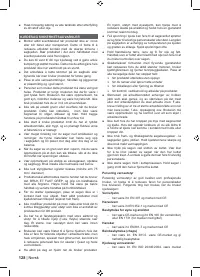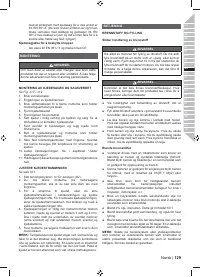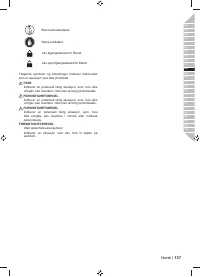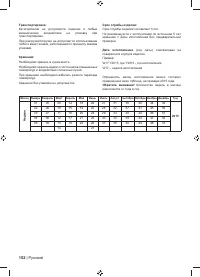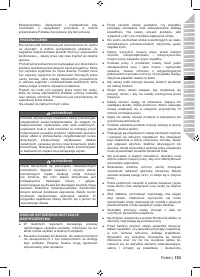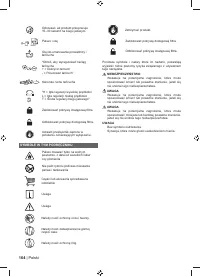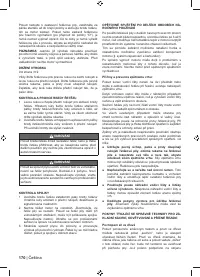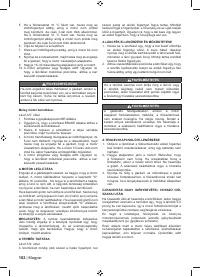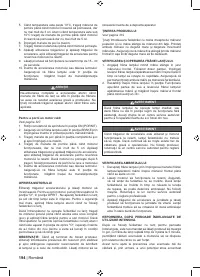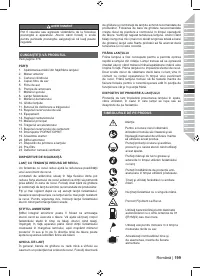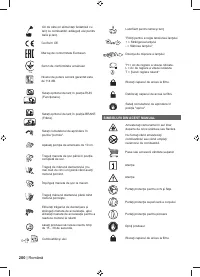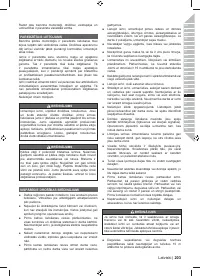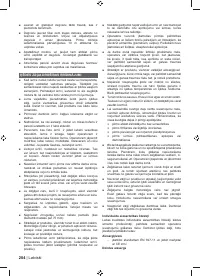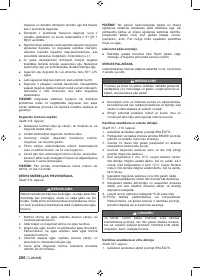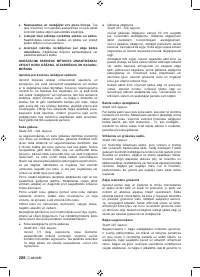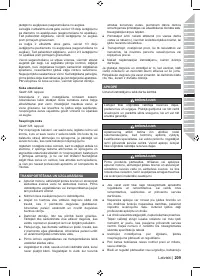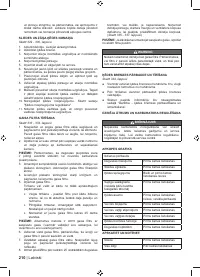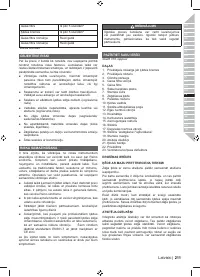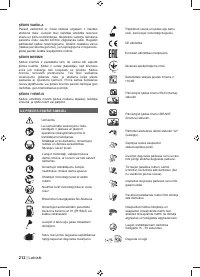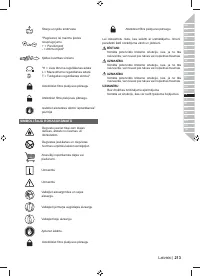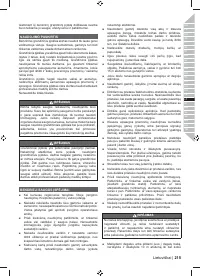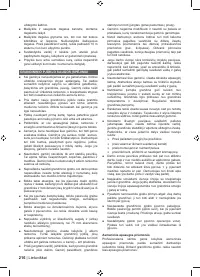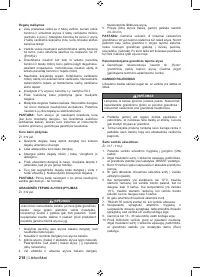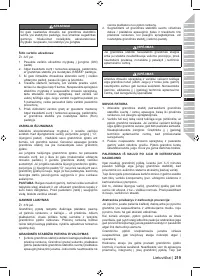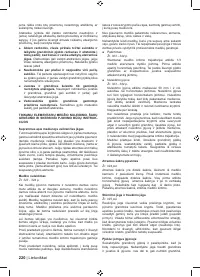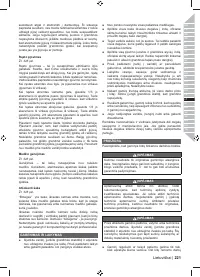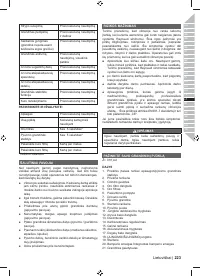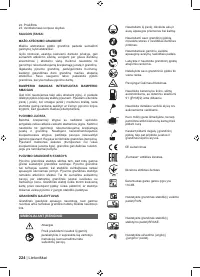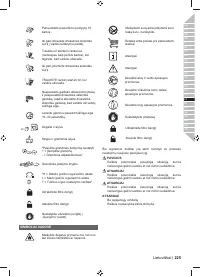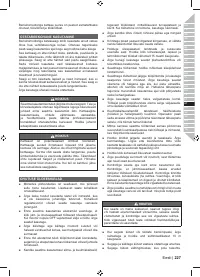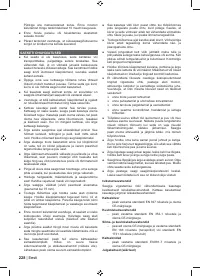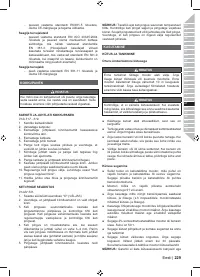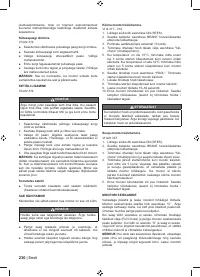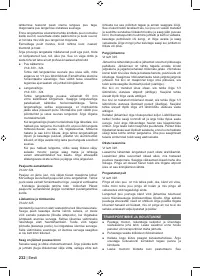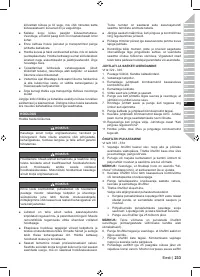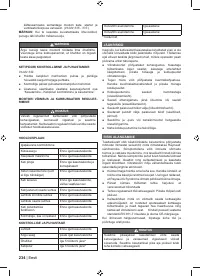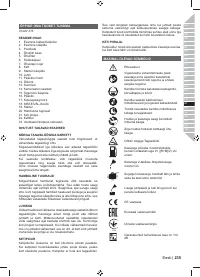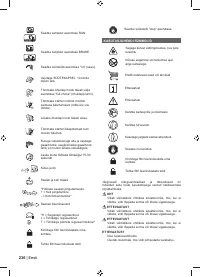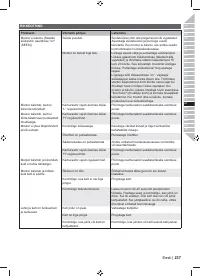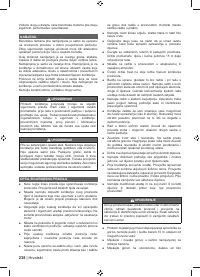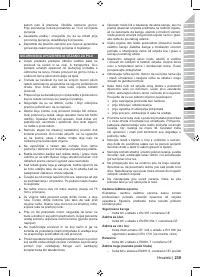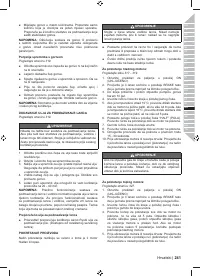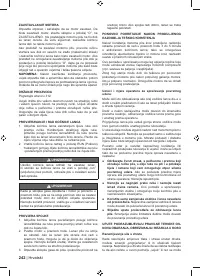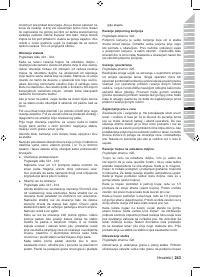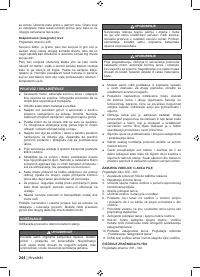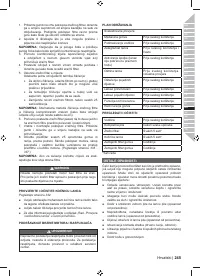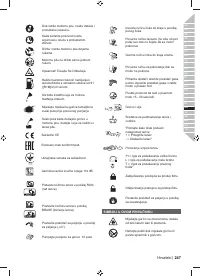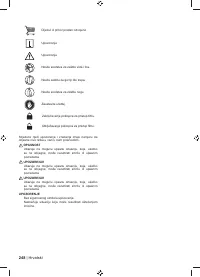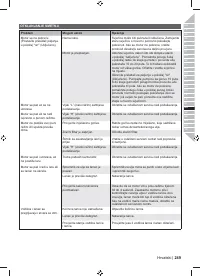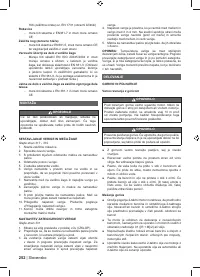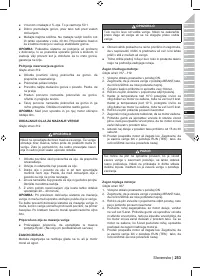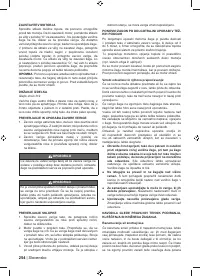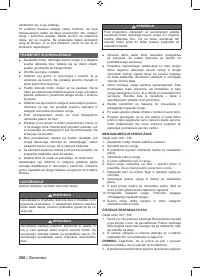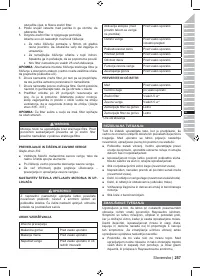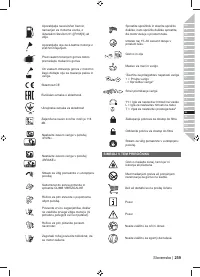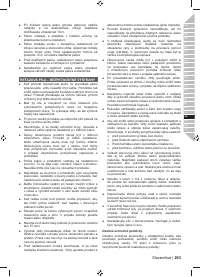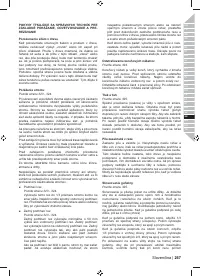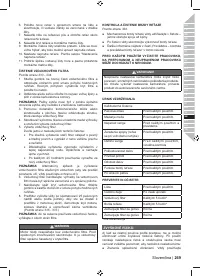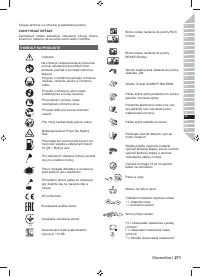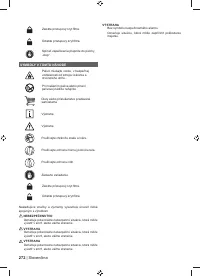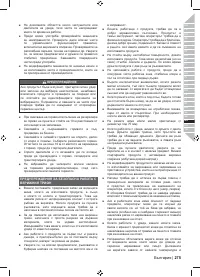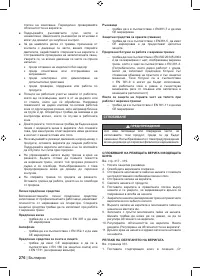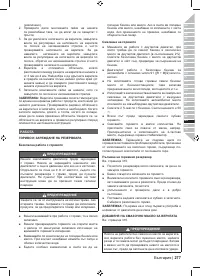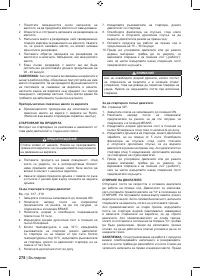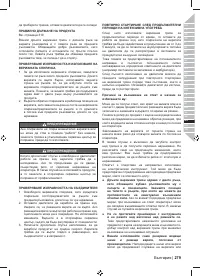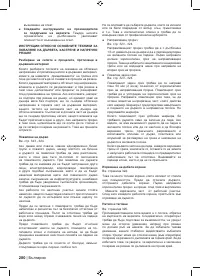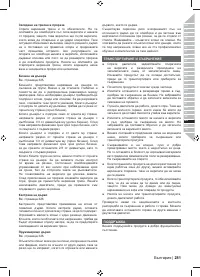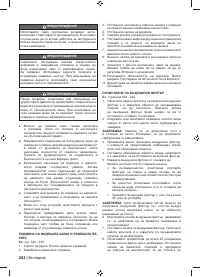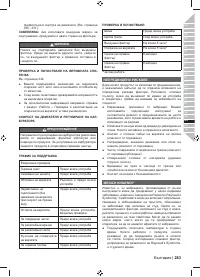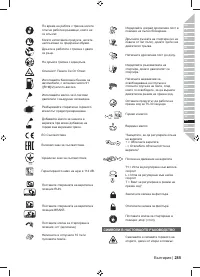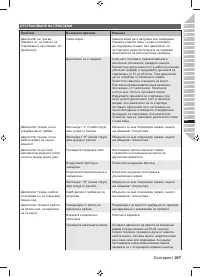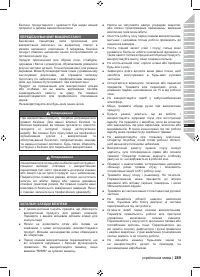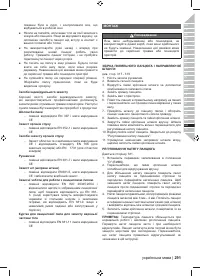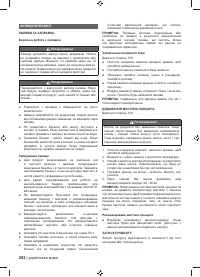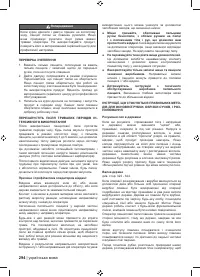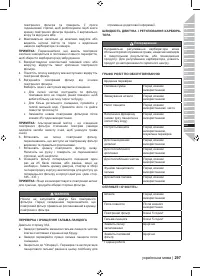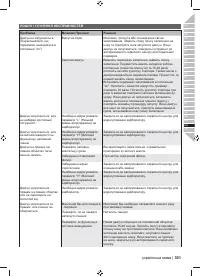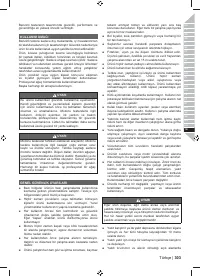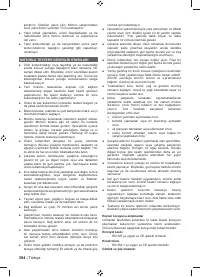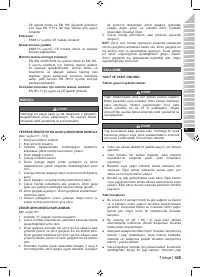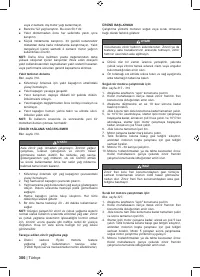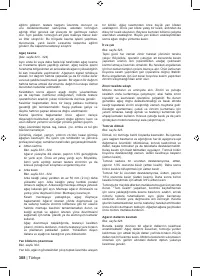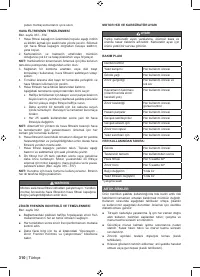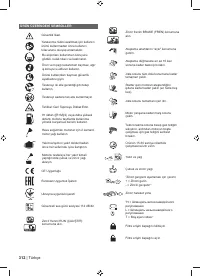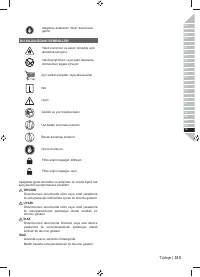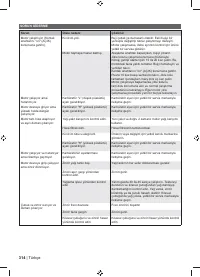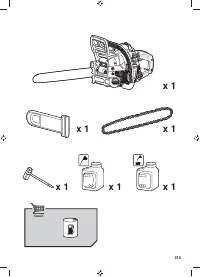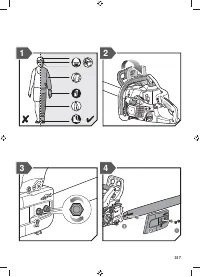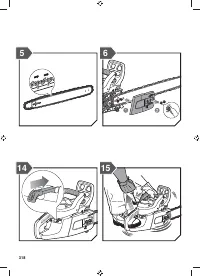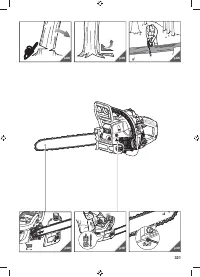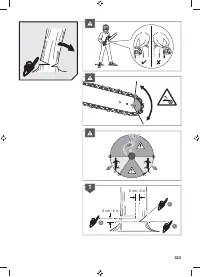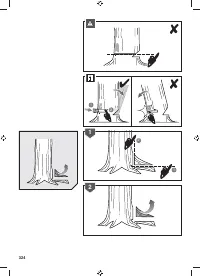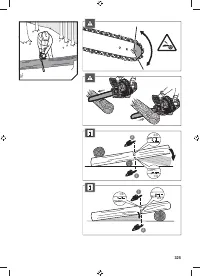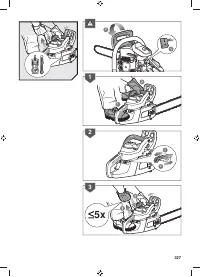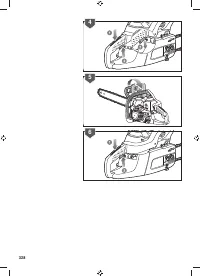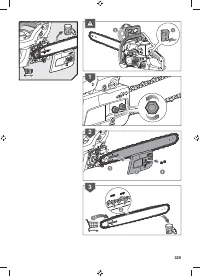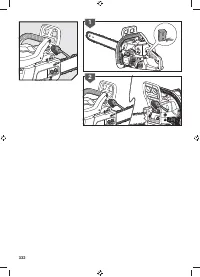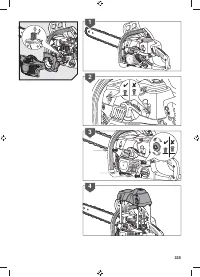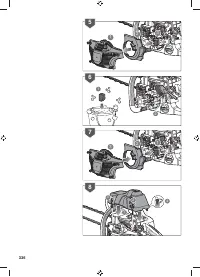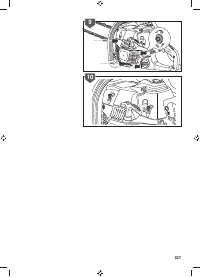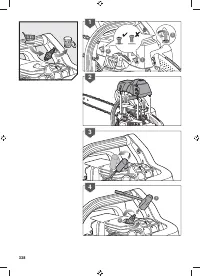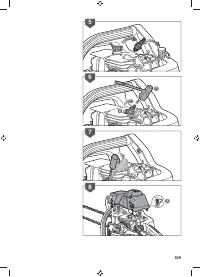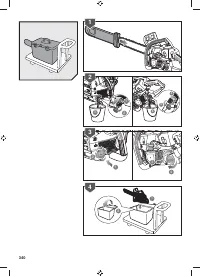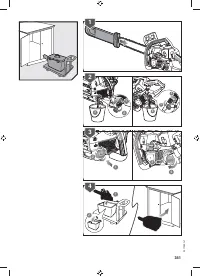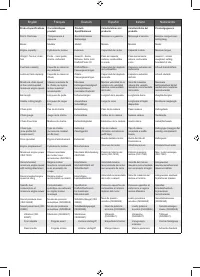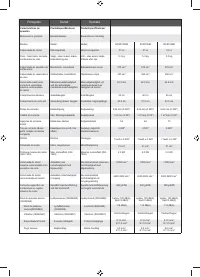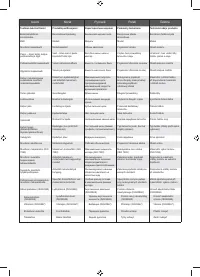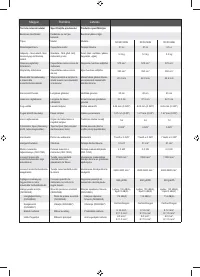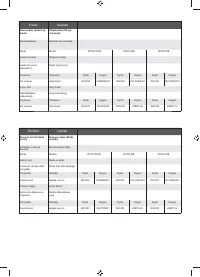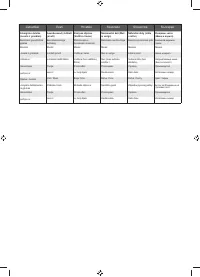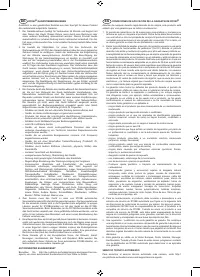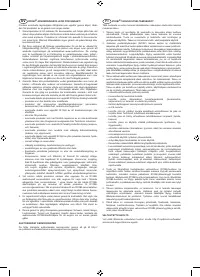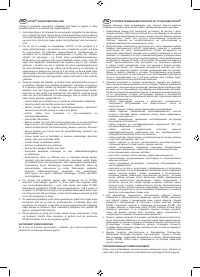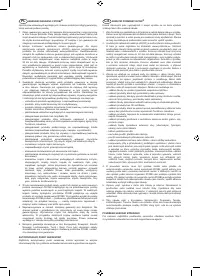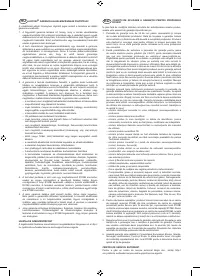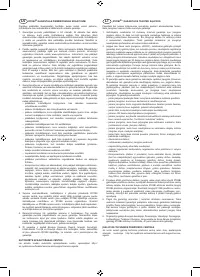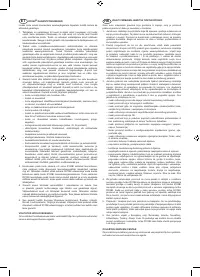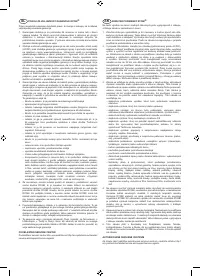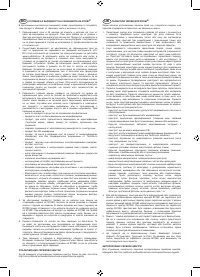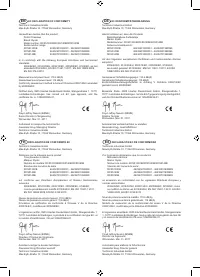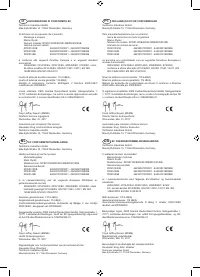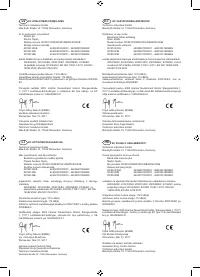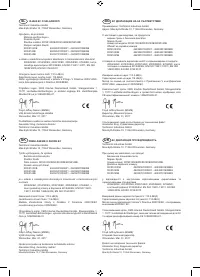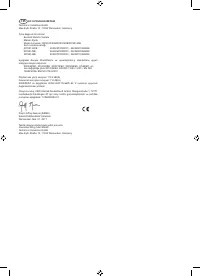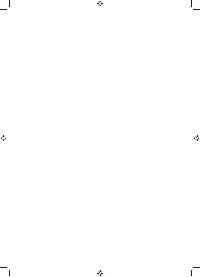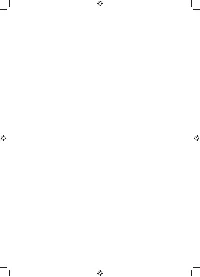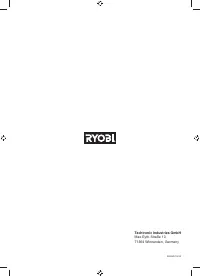Бензопилы Ryobi RCS5133CB 5133001860 - инструкция пользователя по применению, эксплуатации и установке на русском языке. Мы надеемся, она поможет вам решить возникшие у вас вопросы при эксплуатации техники.
Если остались вопросы, задайте их в комментариях после инструкции.
"Загружаем инструкцию", означает, что нужно подождать пока файл загрузится и можно будет его читать онлайн. Некоторые инструкции очень большие и время их появления зависит от вашей скорости интернета.

6
| English
property damage. If the tree does make contact with any
utility line, the company should be noti
fi
ed immediately.
The chain saw operator should keep on the uphill side of
the terrain as the tree is likely to roll or slide downhill after
it is felled.
An escape path should be planned and cleared as
necessary before cuts are started. The escape path should
extend back and diagonally to the rear of the expected line
of fall.
Before felling is started, consider the natural lean of the
tree, the location of larger branches and the wind direction
to judge which way the tree will fall.
Remove dirt, stones, loose bark, nails, staples and wire
from the tree.
Do not attempt to fell trees which are rotten or have been
damaged by wind,
fi
re, lightning, etc. This is extremely
dangerous and should only be completed by professional
tree surgeons.
■
Notching undercut
See page 323 - 324.
Make the notch 1/3 the diameter of the tree,
perpendicular to the direction of falls. Make the lower
horizontal notching cut first. This will help to avoid
pinching either the saw chain or the guide bar when the
second notch is being made.
■
Felling back cut
See page 323 - 324.
Make the felling back cut at least 50 mm/2 in higher
than the horizontal notching cut. Keep the felling back
cut parallel to the horizontal notching cut. Make the
felling back cut so enough wood is left to act as a hinge.
The hinge wood keeps the tree from twisting and falling
in the wrong direction. Do not cut through the hinge.
As the felling gets close to the hinge, the tree should
begin to fall. If there is any chance that the tree may
not fall in desired direction or it may rock back and
bind the saw chain, stop cutting before the felling back
cut is complete and use wedges of wood, plastic or
aluminium to open the cut and drop the tree along the
desired line of fall.
When the tree begins to fall remove the product from
the cut, stop the engine, put the product down, and
then use the retreat path planned. Be alert for overhead
limbs falling and watch your footing.
Removing buttress roots
See page 324.
A buttress root is a large root extending from the trunk of
the tree above the ground. Remove large buttress roots
prior to felling. Make the horizontal cut into the buttress
fi
rst,
followed by the vertical cut. Remove the resulting loose
section from the work area. Follow the correct tree felling
procedure after you have removed the large buttress roots.
Push and pull
See page 325.
The reaction force is always opposite to the direction the
chain is moving. Thus, the operator must be ready to control
the tendency for the product to pull away (forward motion)
when cutting on the bottom edge of the bar. Engage always
firmly the bumper spike to avoid such movement. The
product can be pushed backwards (towards the operator)
when cutting along the top edge. To avoid this, make sure
the chain is not jammed when cutting along the top edge.
Saw jammed in the cut
Stop the product and make it safe. Do not try to force the
chain and bar out of the cut as this is likely to break the
chain which may swing back and strike the operator. This
situation normally occurs because the wood is incorrectly
supported and forcing the cut to close under compression
thereby pinching the blade. If adjusting the support does
not release the bar and chain, use wooden wedges or a
lever to open the cut and release the product. Never try
to start the product when the guide bar is already in a cut
or kerf.
Bucking a log
See page 325.
Bucking is cutting a log into lengths. It is important to
make sure your footing is
fi
rm and your weight is evenly
distributed on both feet. When possible, the log should be
raised and supported by the use of limbs, logs or chocks.
Follow the simple directions for easy cutting. When the log
is supported along its entire length, it is cut from the top
(overbuck).
When the log is supported on one end, cut 1/3 the diameter
from the underside (underbuck). Then make the
fi
nished
cut by overbucking to meet the
fi
rst cut.
When the log is supported on both ends, cut 1/3 the
diameter from the top (overbuck). Then make the
fi
nished
cut by underbucking the lower 2/3 to meet the
fi
rst cut.
When bucking on a slope always stand on the uphill side
of the log. When “cutting through”, to maintain complete
control release the cutting pressure near the end of the cut
without relaxing your grip on the handles of the product.
Don’t let the chain contact the ground. After completing the
cut, wait for the saw chain to stop before you move the
product. Always stop the engine before moving from tree
to tree.
Limbing a tree
See page 326.
Limbing is removing the branches from a fallen tree. When
limbing leave larger lower limbs to support the log off the
ground. Remove the small limbs in one cut. Branches
under tension should be cut from the bottom up to avoid
binding the product.
Springpoles
See page 326.
A springpole is any log, branch, rooted stump, or sapling
which is bent under tension by other wood so that it springs
back if the wood holding it is cut or removed.
On a fallen tree, a rooted stump has a high potential of
springing back to the upright position during the bucking
cut to separate the log from the stump. Watch out for
springpoles—they are dangerous. Do not attempt to cut
bent branches or stumps which are under tension unless
you are professionally trained and competent to do so.











































